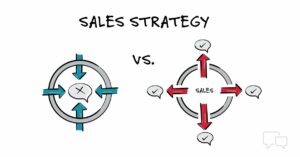Navigating the Landscape of Software Development: A Deep Dive into Models, Methodologies, and Architectures

Introduction:
Embarking on the journey of software development requires a nuanced understanding of the methodologies, models, and architectures that underpin this dynamic discipline. This comprehensive exploration delves into the diverse landscape of software development, unraveling the intricacies of development models and architectural paradigms. Whether you’re a seasoned developer seeking a comprehensive review or a budding enthusiast eager to comprehend the foundational structures, this deep dive promises to be an illuminating odyssey through the evolving world of software development.
I. Software Development Models:
- Waterfall Model:
- The Waterfall model represents a traditional, linear approach to software development. It follows a sequential flow, progressing through phases such as requirements, design, implementation, testing, deployment, and maintenance. While structured, it may lack adaptability to changing requirements.
- Agile Methodology:
- Agile is an iterative and flexible approach that prioritizes collaboration, adaptability, and continuous feedback. Agile methodologies, including Scrum and Kanban, allow for incremental development, enhancing responsiveness to changing user needs.
- Iterative Model:
- The Iterative model involves repetitive cycles of development, each refining the software based on feedback. This iterative refinement contributes to the gradual improvement of the product and aligns with changing requirements.
- V-Model (Verification and Validation):
- The V-Model emphasizes the relationship between each development phase and its corresponding testing phase. It mirrors the Waterfall model but integrates testing at each stage, enhancing the overall quality of the software.
- Spiral Model:
- The Spiral model combines aspects of both Waterfall and Iterative models. It incorporates risk analysis and emphasizes gradual development cycles, allowing for continuous refinement and risk mitigation.
- DevOps Practices:
- DevOps is a set of practices that aim to integrate development and operations seamlessly. It emphasizes automation, collaboration, and continuous delivery, fostering a culture of efficiency and reliability.
II. Software Development Architectures:
- Monolithic Architecture:
- In a monolithic architecture, the entire application is developed as a single, tightly-coupled unit. While simple to deploy initially, scaling and maintaining monolithic applications can become challenging as they grow in complexity.
- Microservices Architecture:
- Microservices architecture involves breaking down an application into smaller, independent services. Each microservice operates as a self-contained unit, facilitating easier scalability, maintenance, and development of individual components.
- Service-Oriented Architecture (SOA):
- SOA is an architectural style that structures software as a set of loosely coupled, interoperable services. These services communicate through standardized protocols, fostering flexibility and reusability.
- Serverless Architecture:
- Serverless architecture, often associated with Function as a Service (FaaS), allows developers to focus on writing code without managing underlying infrastructure. It involves executing code in response to events, scaling dynamically based on demand.
- Event-Driven Architecture:
- Event-Driven Architecture revolves around the production, detection, and reaction to events. It enables systems to respond dynamically to changes, fostering flexibility and real-time responsiveness.
- Containerization (e.g., Docker):
- Containerization involves encapsulating an application and its dependencies into a container. Docker is a popular containerization platform, offering portability and consistency across different environments.
III. Best Practices in Software Development:
- Code Reviews:
- Code reviews involve collaborative examination of code by team members. They enhance code quality, identify bugs, and share knowledge among team members.
- Automated Testing:
- Automated testing, including unit tests, integration tests, and end-to-end tests, ensures the reliability and functionality of code. Continuous Integration (CI) pipelines often incorporate automated testing for efficiency.
- Continuous Integration/Continuous Deployment (CI/CD):
- CI/CD pipelines automate the process of building, testing, and deploying code changes. This results in a streamlined and efficient development workflow, reducing manual errors and improving software quality.
- Documentation:
- Comprehensive documentation, including code documentation, API references, and user guides, is essential for code maintainability and knowledge sharing within development teams.
IV. Emerging Trends and Challenges:
- Emerging Trends:
- Modern software development trends include the rise of serverless computing, edge computing, progressive web applications (PWAs), and the integration of artificial intelligence and machine learning into applications.
- Challenges in Software Development:
- Challenges encompass managing complexity, meeting tight deadlines, adapting to rapidly changing technologies, ensuring cybersecurity, and addressing ethical considerations in the development of AI-driven systems.
V. Conclusion:
Software development, a vibrant tapestry of methodologies, models, and architectures, invites practitioners into a world of perpetual learning and innovation. This deep dive has navigated the expansive terrain of software development, providing insights into development models, architectural paradigms, and best practices. Whether you are shaping the future of digital solutions or setting foot on the path of code, may this exploration inspire you to embrace the challenges and possibilities that define the ever-evolving landscape of software development.




